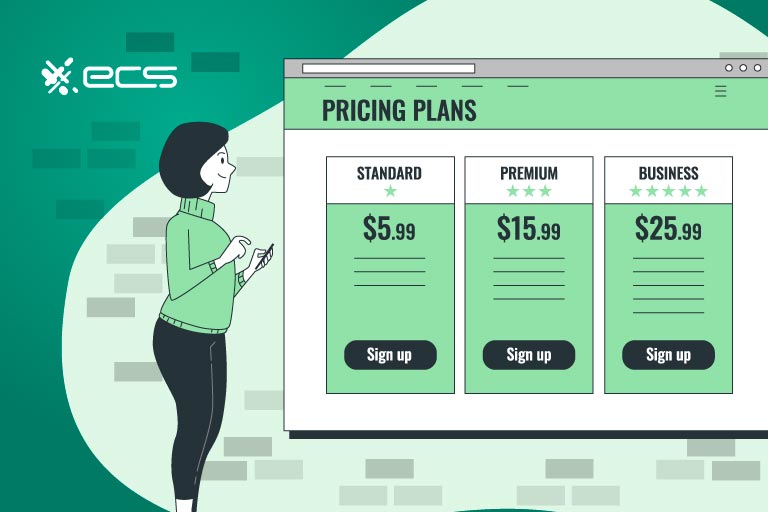Some businesses sell goods, some sell services, and some sell both. But whether a business owner is selling products or services, they will need to make a profit margin. This means, as a business owner, you will need to know how to price your services. You will have to have a pricing strategy.
The pricing model for goods is a little easier to compute because each product has a cost of production. But what if you are selling services? How do you price something as intangible as time, effort, and experience?
Do you charge an hourly rate? Do you charge for value? How do you establish competitive pricing—so you can maximize profits, but avoid driving clients away to competitors? Let’s take a look at how to charge for your services.
Why Do People Start Their Own Business?
But first, let’s take a look at service-based businesses in general. The reason why 88% of people choose to start their own business is that they want to be their own boss. 71% are excited about the income potential. 55% are enthusiastic about a lifestyle, such as a better work-life balance. 49% are actually just trying to supplement their income. And 37% are tired of climbing the corporate ladder.
As you can see from these numbers, there is some overlap between the motivating factors. But generally speaking, business owners are self-starters. They want to take matters into their own hands. They want control over their schedule, control over their earning potential, and control over what they do.
Business Owners Have to Do It All
And ultimately, they will need to. In corporate settings, an employee can fall back on the corporation for troubleshooting problems and backend management. Payroll is done for you. Marketing is done for you. Business procedures are outlined for you. And if your hardware breaks down, there’s an IT guy in the basement who lives off ramen noodles, collects Nintendo vinyl figures, and looks like he could use some vitamin D.
Not so when you own your business. You’ve got to create the policies and procedures. You’ve got to file the legal paperwork. You’ve got to find the office space, pick up the coffee and donuts, and (worst of all) learn a little bit about computers and routers and firewalls and data clouds—or hire an IT guy to do that part for you, at least.

YOU Will Have to Set Your Prices
And you will also have to price your services if services are indeed what you’re selling. As mentioned, that’s much more intangible than the pricing structure of goods. To be fair, there is an art and science to product pricing. But because each product has its own fixed cost once it’s produced, it’s easier to compute a good price for the end customer.
One of the biggest reasons it’s hard to know how to price a service contract is that there can be a lot more surprise expenses. There are certainly surprise expenses in the product economy (a very broad term encompassing lots of random stuff for sale). Customers can return items. Shortages of raw materials can occur, driving up prices from suppliers.
And, in some places, people can just walk into a store, take up to $1,000 of goods, and walk out—which is why Target will lose $500 million to retail theft this year. Whether or not that drives up product prices awaits to be seen, but in a small business setting, it certainly would.
Service Driven Businesses May Have More Hidden Surprises
But by and large, these mishaps are blips on the radar screen. Product prices do change over time because of inflation. A dozen eggs were fifty cents back in 1950, while today it’s topping $5 in some places. A gallon of milk was forty cents, while it’s up to $3 today. However, business owners can recalibrate their pricing structure every year to make sure they are making money.
Cost plus pricing, as it’s sometimes called, is not so simple with service-based businesses. You may expect to put a certain number of hours into a project, only to find it takes double or triple that amount of time. You may expect to use a certain number of resources, only to find you are using twice or three times that amount.
Part of the challenge is that there is no original cost to work with. You are not holding a tangible item in your inventory that costs x amount of dollars. Just a song in your heart, a pep in your step, and lots of knowledge about how to file taxes, teach a seminar, or give a massage. Or whatever service you provide.
True, you’ve got some years of experience behind you. You may have put some money into certifications, degrees, seminars, webinars, and apprenticeships. And indeed, these expenses can be built into your pricing. But it’s still a little bit wishy-washy. So we are back to the original question: how to price your services as a freelancer, contractor, or service-based business?
Spoiler alert: there is no overarching formula. But there is a checklist.
What Are the Most Popular Types of Service-Based Businesses?
One more digression, if you will entertain this train constantly switching tracks (and actually, it will lead into our first box to check). Let’s take a look at the most popular types of small businesses in every state.
In Connecticut, Idaho, Maine, North Dakota, and Vermont, the most popular small business is home renovation. It’s landscaping in Minnesota, Florida, and South Carolina. In Pennsylvania and Ohio, it’s housekeeping. In Delaware and Montana, it’s daycare. In Iowa, it’s styling. In Massachusetts, it’s consulting. In Wyoming, West Virginia, and Rhode Island, it’s fitness. And in other states, it’s a variety of goods-based businesses.
There is actually an interesting breakdown between rural and metro areas as well. There are even differences from city to city, reflecting economic and cultural differences. What this all has to do with service-based pricing is that these businesses are your competition. And in pricing your services, you need to see what competitors are doing.
Question One: How Special and Unique Are Your Services?
If the services you provide are a rarity in your locale, you can charge more. If they are fairly common, you will have to charge less. Looking to be a personal trainer in Rhode Island? Hop in line, because there are plenty of people ahead of you. Looking to offer consulting services geared toward restaurant owners in New York City? Buon Appetit, and join the crowd. Looking to drive a limo in Las Vegas? You’re not the only one.
Examples are different in each place, but you get the idea. Take a look around and see what your competitors are charging for similar services in your immediate area. This will be an informative step towards knowing how much service providers, contractors, and freelancers charge for what you do.
It’s All Relative
Make sure that your inquiry examines business owners in your geographic location. Their pricing will reflect profit margins that enable them to live comfortably. The cost of living is much different from state to state and even county to county. The average mean wage is $45,000 in Mississippi, while it’s $74,000 in New York. You can stretch $100 into $114 of value in Alabama, but it will only cover $80 of comparable goods in Hawaii. Aloha!
This means that service and freelancing work in different locations must have different prices. If you’re charging New York Prices to work with clients in Alabama, you probably aren’t going to get a lot of clients. And if you’re charging Alabama prices in the Big Apple, you probably won’t live up to the words of Frank Sinatra (if I can make it there, I’ll make it anywhere).
In today’s day and age, many people market their services online. Do not look at freelance rates of similar service providers in different locations as a guide, for a few reasons. One is that their pricing may cover their expenses where they live, not you. A programmer living in India can get away with charging 10% of what an American programmer needs to charge. If you lower your pricing standards, you will either need to take on more clients or move to India.
Question Two: How Much Are Your Direct and Indirect Costs?
Earlier we mentioned incorporating the price of your journey into your customer-facing pricing. If you have some sort of degree or accreditation you are still paying off, that will certainly impact the pricing of your services, in addition to your working hours.
Other indirect costs include the backend tools and services that animate your business. Do you have hardware like computers that you are still paying off? Do you have software like accounting or CRM (customer relationship management software)? Do you have fees and licenses and permits? Do you outsource your tax paperwork to an accountant?
What about your working space? Do you rent an office? Do you work at home? Despite what you may think, working at home is not free. You have utilities, internet, and your rent or mortgage. All of these considerations are important to factor into your indirect expenses.
Add up all these indirect expenses and figure out how much they cost on a monthly basis. For some businesses, indirect expenses are going to be very minimal. For other businesses, they are going to be very expensive. It all depends on your business.

Services That Rely On Products
Now on to direct expenses. Do your services involve any products? For instance, a catering company also needs to purchase food. A mechanic needs to purchase supplies. A contractor needs to purchase building materials.
The exact formula varies from industry to industry, but generally speaking, most business owners charge the client at least double the cost of the indirect expense, in addition to the price of services rendered. This is certainly true for B2B interactions. In B2C settings, you might charge the end customer less, but that is up to your discretion. Never charge the customer at cost unless you’re doing them a personal favor.
For instance, let’s say you are an appliance repair mechanic. A customer’s oven is broken, and you will need to order a $150 part to replace it. If this is Grandma’s kitchen, you’ll do it for free, won’t you? But if it’s someone else’s grandma’s kitchen, consider charging 150% for the part. And if this is Grandma’s Kitchen (capital letters, as in, a catering company) you’re charging $300 for that piece, in addition to labor.
There’s no exact science to these numbers. The only basic rule is never to charge the customer at cost for your direct costs, otherwise, most of your day will be spent treading water. For one, padding your direct costs provides you with the opportunity for padding against hidden expenses. If you can, speak to some friends in the same line of work or business. Mentorship is key in owning a small business.
Don’t I Get a Tax Break On My Expenses?
You do indeed get a tax break on your expenses. So what? What’s that got to do with the price of rice in China? Not a lot, unless you import rice. In any case, business owners are allowed to itemize business expenses on their 1040 form when they file taxes. This includes direct and indirect expenses.
What if you work from home? A standard home office deduction allows you to claim up to 300 square feet of space at $5 per square foot, for a total of $1,500 off your taxable income. As that’s actually not so much, we’ll slide two helpful gems of wisdom into our discussion of pricing services: the area method and the number-of-rooms method.
If you run services out of your home and use a room in your house for those services, you can enjoy a bigger tax break. The area method takes the percentage of space dedicated to this service, and the number of rooms looks at the rooms allocated to said business.
Suppose you have a daycare in your home. Or a hair salon. Or a room where you consult with clients (even virtually). Let’s say your home is 2,500 square feet, and your home office is 500 square feet. That’s 20% of the home. And let’s say your home has 7 rooms. Your home office is one out of those seven.
Home Office Deduction Formula Examples
Now suppose your combined monthly mortgage payment, insurance, and utilities are $3,000 per month or $36,000 per year. According to the area method, you could claim 20% of that, or $7,200, as a business expense. According to the number of rooms method, you could claim 1/7th of that, or $5,143, as a business expense. Obviously, the area method is a better deal.
Suffice it to say, you are entitled to take business-related expenses off your taxable business income, lowering the amount of the taxes you owe. Many direct expenses can be subtracted dollar-for-dollar. But even so, this does not mean you should change your customer-facing pricing. For one, you are still going to have to pay these expenses all year.
Include them in your pricing, as best as you can. For example, let’s say the total of your direct and indirect expenses is $5,000 per month. And let’s say you can work with 10 clients per week, which comes out to about 43 each month. Consider building $116 into the price charged for each client, to cover your overhead. Otherwise, you’ll be playing catchup all month, and panting for that tax refund (although…who isn’t).

Question Three: How Much Do YOU Need to Get Paid?
Payroll is your next factor. If you have an actual payroll, this is a no-brainer. But if you’re like 73% of small businesses, you’re flying solo (literally, if your business is flying charter jets, or spelling out words in the sky). You still need to get paid as well. What are your own personal expenses? Figure that out and then incorporate it into your pricing.
This number will vary depending on where you live (per our earlier discussion about the cost of living). It will vary depending on your household size. And it will also vary based on your living habits. If you shop at boutique grocery stores for caviar and artisan crackers, your living expenses are probably higher than the business owner munching on frozen pizza from Safeway.
But to each their own. Moreover, if you want to raise your cost of living, you might factor that into your pricing as well. Certainly, you should factor inflation into account, especially since we’re living in times when eggs cost more than a gallon of gasoline.
Cost Of Living and Pricing Examples
Let’s say you need $100,000 to live comfortably or $8,333 per month. And let’s say (returning to our earlier example) you can meet with about 43 clients per month. Remember you need around $116 per client to cover your operating expenses. You should therefore be trying to get at least $300 per month from each client, whatever that means. It might mean one, two, or even three in-person or virtual consultations.
To get a better grasp on that number, circle back to your marketplace and what other business owners are charging. If other financial advisors are charging $300 per meeting, your 43 clients will see you once a month. If other personal trainers are charging $100 per hour, each client will get three sessions with you.

Question Four: What Is The Value of Your Services?
But then you’re left with the problem of working three times as much to be a physical trainer as you are to be a financial advisor. Those might be the breaks, as they say. Because our final consideration is the value you bring to your clients.
As much as possible, charge for value, not for time. Charging per hour is going to put you into the same situation that many business owners were helping to avoid: working for someone else. Sure, maybe you’ll get $100 per hour instead of $20. But what happens when a project you expected to spend two hours on becomes ten? You’re right back to your old wages.
There are some service-based businesses where it’s impossible to escape from hourly contracts. But you’ll find that even service providers who charge per hour are charging for the worth of their services. Do you know how to fix a toilet or an air conditioner? No. That’s why you’re paying someone $100 or $200 per hour, because they do.
Sell Products, Not Services
For services where the clients do not know how many hours you put into the project, you should certainly charge for value. This means, strangely enough, that you should ultimately try to treat your services like products. What is the value of your service to the client? Think about that and charge them accordingly.
If you can’t get a good grip on that number, see what corporations or bigger businesses charge for your services, rather than what they pay their employees. You can also look at what successful service providers are charging, although these prices may be a little more difficult to locate. Do keep in mind that someone at the top of their field may have more experience, and consequently offer value. But by the same token, do not sell yourself short. Own this!
Pricing Services: A Wrap-Up
In summary, when charging for services, you should (1) know your marketplace, (2) factor in your indirect and direct expenses, (3) factor in how much you need to make, and (4) charge for value, not for time. Even if you do have to charge for time, make sure those hourly charges reflect the value of your service, and not what an employee should be paid by a company to render them.
At the end of the day, you can save a lot of time and money by using a payment processor to charge your clients for services rendered. POS hardware and software can integrate with accounting software like Quickbooks, eliminating hours and hours of manual work. This can leave you with more time to spend outside your business, with family, friends, or pursuing hobbies. It can also help you to avoid eating away at your profit margin.
Don’t forget, your client-facing prices include those hidden expenses like your time. Too much time spent on backend concerns means fewer clients. That said, when you can automate your accounting with a payment provider, you can keep your pricing and your profit margins robust. To learn more about improving your business in this way, give us a call or contact us using the form below.
